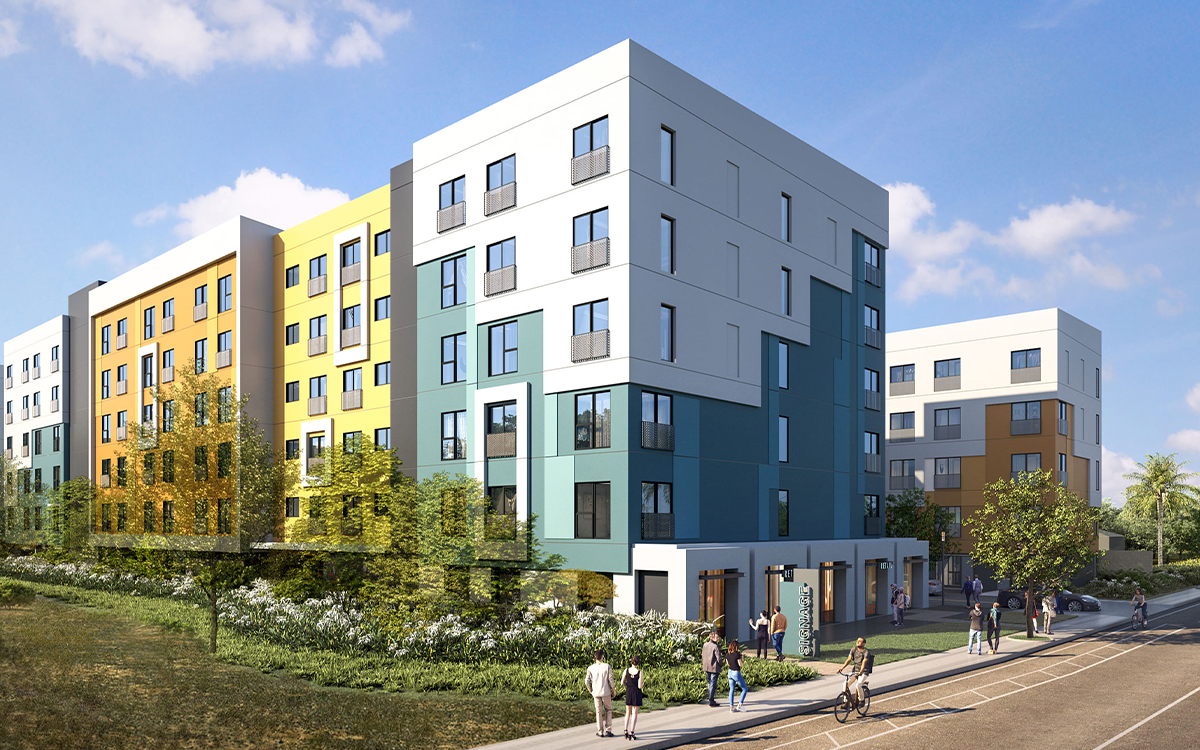
by AO
| Last week Governor Newsom signed AB 2011, the Affordable Housing and High Road Jobs Act of 2022. Becoming operative on July 1, 2023, the law brings forth several implications including a mixed bag of new development opportunities and challenges. We sat down with RC Alley, Managing Partner at AO, and land-use attorney Sean Matsler, Partner at Cox Castle Nicholson, to interpret AB 2011 and shed some light on what California’s multifamily developers need to know right now. |
How does AB 2011 expand multifamily development opportunities?
Subject to a host of requirements as set forth in the bill, AB 2011 designates two types of housing projects in commercial zones to be ministerial and exempt from CEQA: (1) 100% fully affordable housing developments and (2) mixed-income housing projects along commercial corridors. By allowing housing developments along commercial corridors and in zones primarily for retail, parking, and office uses, AB 2011 expands land options for multifamily developers. Underutilized or vacant office/retail properties now have a new, streamlined process to allow for their redevelopment as multifamily housing.
What potential pitfalls should developers be on the lookout for?
While AB 2011 may alleviate lengthy approval processes, projects approved under the new law will be subject to labor provisions including a prevailing wage requirement and health care requirements for projects over 50 units. In addition, under some circumstances, AB 2011 requires developers to make a relocation payment to a displaced commercial tenant. These requirements will inevitably increase development costs. Projects must meet rigorous criteria in order to qualify for AB 2011. Depending on the type of housing, developers should pay special attention and conduct thorough site analysis for each project to ensure that the required criteria is met.
Diving deeper, what key multifamily design opportunities are presented by AB 2011?
The main opportunity we see is the ability to combine AB 2011 with other Senate and Assembly Bills like SB 1818 to achieve a higher density for certain qualifying sites. This paves the way for creative solutions like hybrid product developments in jurisdictions where high-density projects may not pencil. Hybrid product developments combine a high-density product (podium, wrap, HD on-grade) with a lower-density product (townhomes, tuck-under apartments) and can help prevent market saturation while maximizing density and meeting the developers proforma. It is important to note that while AB 2011 and SB 1818 can be combined to take advantage of density bonus incentives, no concessions can be made to reduce local requirements for ground-floor retail. A potential solution is to work with the city to include within the conditions of approval a provision allowing the conversion to retail space into units if retail proves to be unsuccessful after a stated period of time.AB 2011 allows developments to maximize the leasable square footage of the site since the law requires no parking with the exception of EV and bike stalls. A balanced approach is recommended, and developers should consider the site and marketability of this provision to understand if minimal parking would help or hinder the development.
How will AB 2011 affect city requirements and approvals?
As always, we expect a significant learning curve with all jurisdictions as they adopt and implement new senate and assembly bills. AB 2011 is no exception; however cities and developers would be well served to understand the pros and cons of AB 2011 as early as possible in order to anticipate potential issues. Additionally, we recommend that developers consult with local jurisdictions and agencies before July 1, 2023 in order to leverage the intervening months for planning and design. However, it is important to note that there is a process by which the City can exclude the project site from AB 2011 by-right provisions by making written findings that alternative sites exist. These findings include, for example, that the development would result in (i) no net loss of the total potential residential density in the jurisdiction, (i) no net loss of the potential residential density of housing affordable to lower-income households in the jurisdiction, and (iii) affirmative furthering of fair housing.
In terms of city requirements, if the local government has affordable housing requirements, the higher percentage requirement and lower income shall apply.
It’s still early in the game, but overall, we believe that AB 2011 will support the development of more multifamily housing and help cities address the housing crisis in California. Extensive analysis is required, but generally, sites in cities with dead retail corridors and high RHNA numbers will be good candidates for AB 2011. The new law will be a helpful tool in repositioning and repurposing underperforming, obsolete retail and office projects, creating more housing and vibrant communities.
Questions, comments or want to know more?
Contact AO:
RC Alley, Managing Partner | rca@aoarchitects.com
Ioanna Magiati, Principal | ioannam@aoarchitects.com
Contact Cox Castle Nicholson:
Sean Matsler, Partner | smatsler@coxcastle.com
www.coxcastle.com
